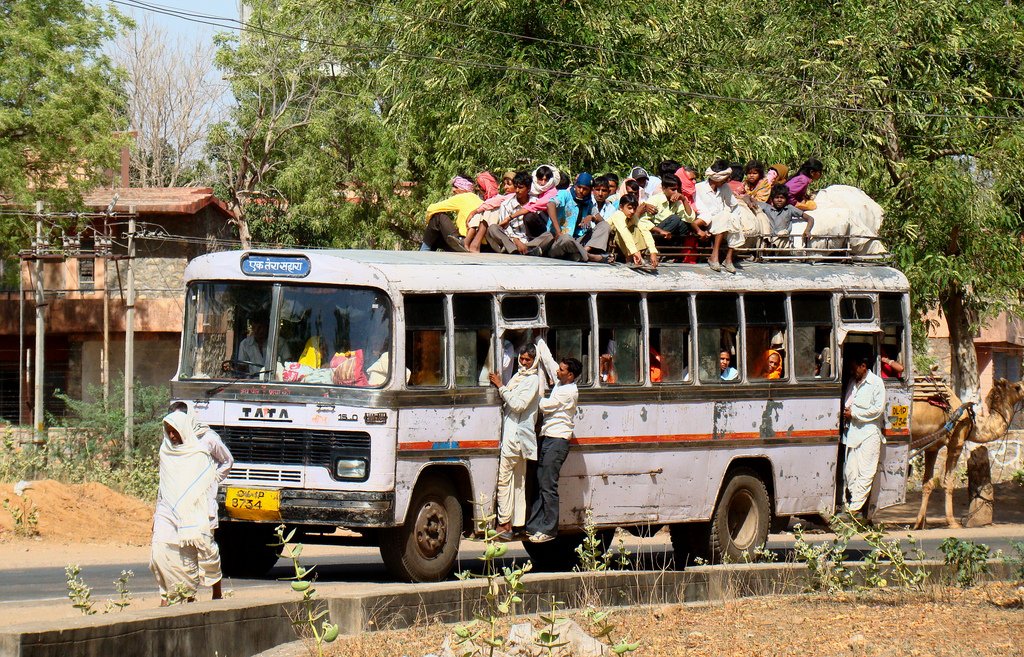Freedom of movement is often taken for granted. For millions around the world the ability to travel by land, air, or sea from one point to another is a luxury and a challenge. Access to transportation is limited for many because they live in a remote area, have a disability, is unsafe or the cost is prohibitive. In sub-Saharan Africa it is estimated that women spend a minimum of 16 million hours a day collecting drinking water, some making multiple trips to carry enough to their homes. Transportation for these women would save countless hours and the physical toll of walking long distances to fetch and carry water and would dramatically change their lives.
Globally, the transportation sector carries a huge human and environmental impact. Transport accounts for a total of 23% of energy-related greenhouse gas emissions, and road congestion comes at an economic cost, accounting for 0.7% loss of GPD in the USA, and 10% of GDP in cities like Beijing, São Paulo and Lima. Pollution from transport also contributes to an estimated 3.5 million premature deaths annually.
If the transportation sector is not reformed, global goals to eradicate extreme poverty and promote sustainable development may never be achieved. But now, the international community is awaking to the fact that there is a profound need to harness transportation as a tool for sustainable development. Just last week, a UN panel issued a set of recommendations around “Mobilizing Sustainable Transport for Development” and later this month, leaders will gather for a first-ever Global Sustainable Transport Conference. This issue is finally getting the global attention it deserves.
Better Learn a New Buzzphrase: “Access through Transport”
Comprised of sixteen individuals from across the private sector, civil society, and government the Advisory Group that wrote the report was tasked with addressing transport across all sectors (aviation, marine, ferry, rail, road and urban public transport), as well as issues of safety, congestion and climate impacts.
Arguably the most significant of the proposals made, is a shift from focusing on mobility as a service, to the idea of “access through transport,” as an improvement on peoples quality of life, and in particular the impact it can have on safety and social equity. This could change how progress in transportation is measured. Moving from a quantitative measurement of how many people use a given mode of travel, to measuring quality through regulations of safety, affordability, and accessibility, as set out in the 2030 Agenda.
Worldwide approximately 3,400 people are killed on the road daily, including 500 children. Rather than increasing the number of children that have an accessible method of transportation to get to school, the safety of how children get to school could be looked at and addressed. For example, the SaveKidsLives Campaign is aimed at raising awareness and addressing the dangers children face everyday on the journey to and from school. In Tanzania the campaign is targeting schools in poor and overcrowded areas where at least 1 in 25 children are injured every year on the road, and aiming through the use of helmets, seat belts, and speed management around schools to reduce this number. Where a motorcycle is the main family transport, mandating helmet use for children combined with speed limits near schools could save lives.
The report recognizes and connects the transport industry and policy to issues of education, and hunger in an illustrative manner that highlights how all the SDGs are connected. Better roads and more efficient vehicles to transport food can reduce food waste as well as emissions, linking the SDGs on hunger, infrastructure, energy and climate. The report links transport across the 17 SDGs, but falls short of providing a clear path forward to attain sustainable transport.
The recommendations are focused on government action, although the Advisory Group is comprised of both the private and public sector. Additionally, the Advisory Group fails to address systemic challenges faced at the international level. The challenges of geographic isolation and vulnerability to environmental shocks or a dependence on neighbors faced by landlocked and small island countries are not explored in depth and no concrete proposals made.
Essentially, the report speaks to those already in the transportation planning and policy sector. Introducing them to sustainable development and specifically to integrating a social and environmental focus into transportation efforts. The Sustainable Development Goals connect issues and sectors that have been and are used to operating in silos, breaking these patterns is no small task. Introducing the 17 Sustainable Development Goals to those in the transport sector helps to promote sustainable development overall and pushes everyone to think about development through this lens.
The Advisory Group concluded that annual investments of around US$2 trillion dollars are needed to achieve sustainable transport globally. That is obviously a huge sum of money and will require the mobilization of funding across aviation, marine, ferry, rail, road and urban public transport. We will get the first sense of the extent to which governments and the private sector are willing to commit financially to reforming the transportation sector later this month, during the first-ever Global Sustainable Transport Conference, to be held in Turkmenistan on 26-27 November 2016. This will be the first test of whether some of the ideas and proposals embedded in this report will be translated into concrete action. But we do know that sustainable development–and achieving the sustainable development goals–is probably impossible without radically transforming how people move around the world.
